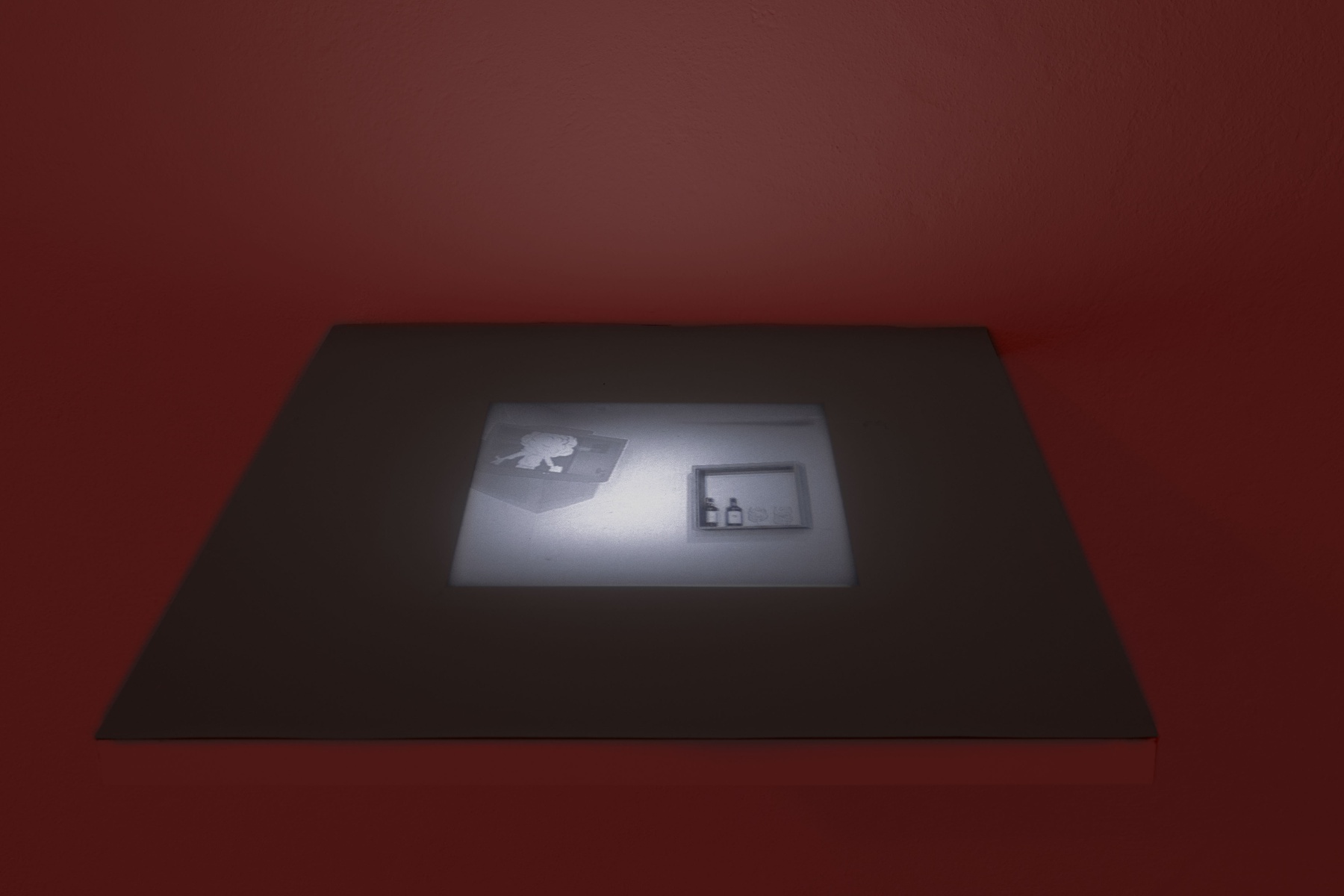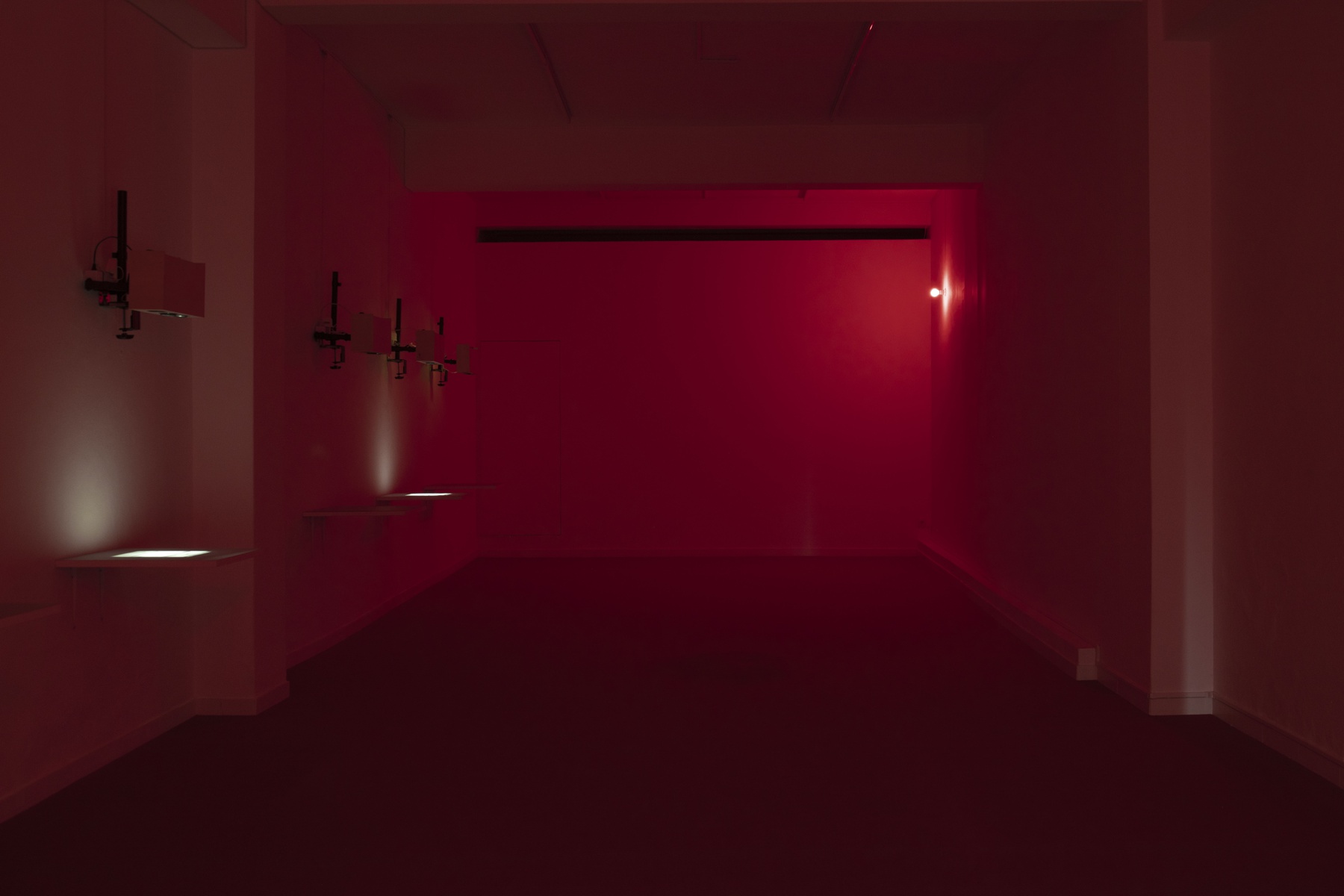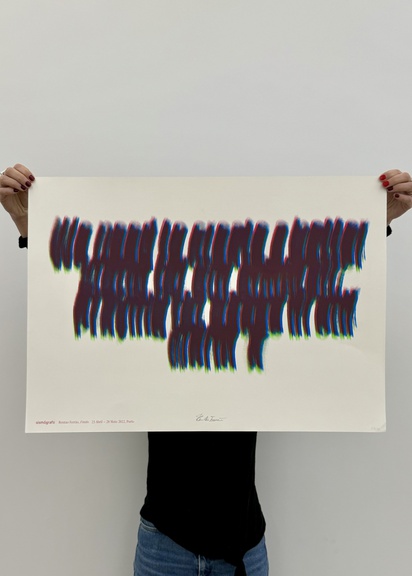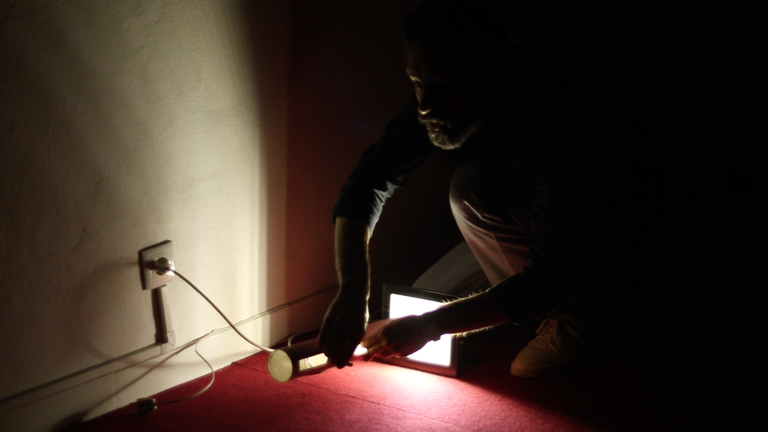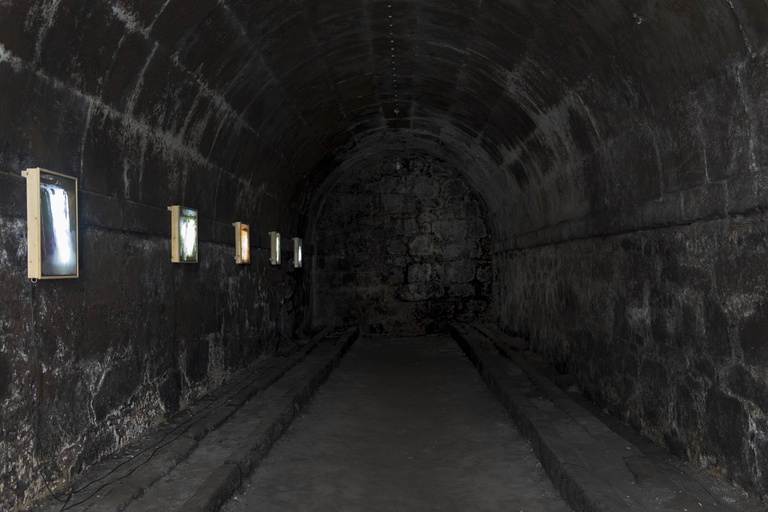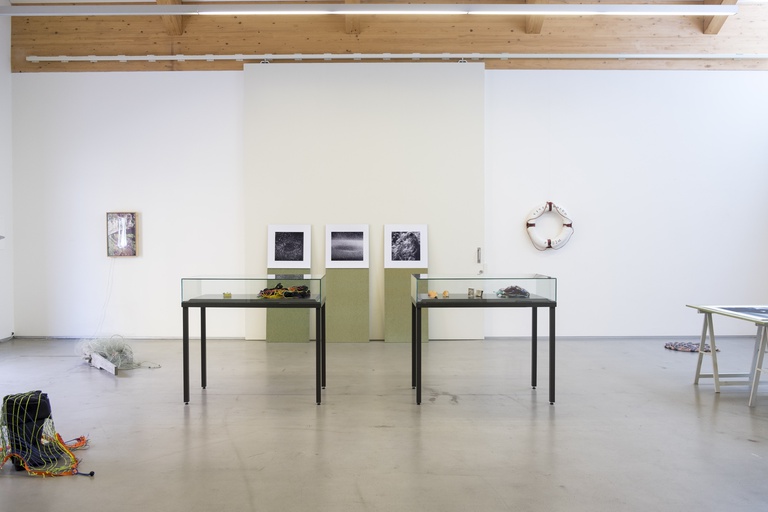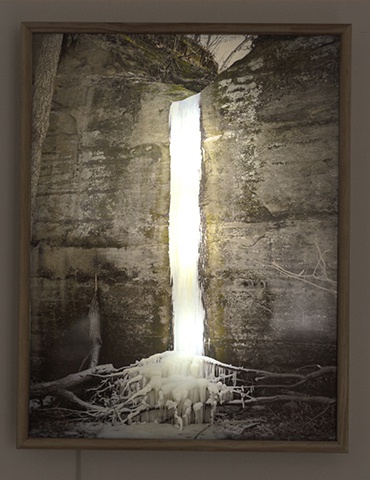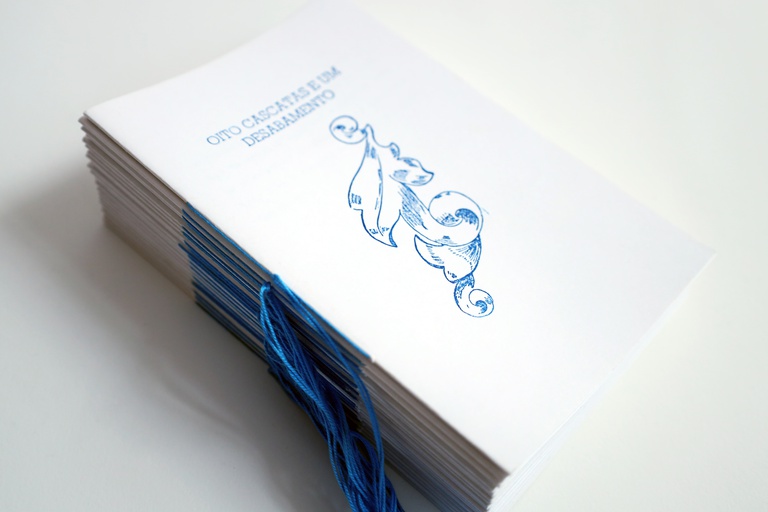Finito
Exhibition
23 Apr – 28 May 2022
Opening
Saturday, 23 April 17:00
Free admittance
Here on the mobile, it's hard to figure out, but what you are seeing is a picture of Tom at the precise moment he lost his head, Renato was telling me while we were drinking a beer at the Embaixador's esplanade, late in the afternoon of March 22. It was raining. A lot. And every time Renato spread his fingers over the screen in one more magnifying movement, the water droplets created a deformation trace, like little iridescent lenses shredding what was left of poor Tom. I'm not sure I said it to Renato, but at that moment I remembered Pedro Miguel Frade and Espinosa. The second one reminded me of the fact that he supported his amazing philosophical contribution to the world with the meager retribution that came from a day job as a lens polisher. The first one made me think of fragments of the book Figuras de Espanto (Figures of Astonishment), among which were the widespread mistrust of the Middle Ages towards the (new) lens technology (something like if God wanted us to see better, he would have given us more powerful eyes!), its sedimentation in the Renaissance period, its contribution to the discovery of the infinitely small and the infinitely large (micro- and telescope), its role in the invention of photography.
It was simply fitting that Tom had just lost his mind in that image: the “astonishment” to which the title of Pedro Miguel Frade's book referred was linked to the late 19th century folk belief that guaranteed that photography held hostage the soul of the photographed. According to this credo, each portrait would therefore correspond to a soulless, living dead person who had inadvertently allowed himself to be hypnotized by the infinite blackness peeking from the camera shutter. Applying the same logic, we can deduce that, for these first viewers, photography could not be anything other than the soul imprinted on paper, which rendered it a kind of corpus delicti and, simultaneously, the place of reification of that intangible essence of the portrayed in the form of a black and white miniaturization of his image. The “astonishment” was not -at least at first- the expression of a wonder; the “astonishment” was the expression of a terror.
I suspect that every author who has devoted himself to photography has inevitably been driven to the question of death. Photography is always in the past, on the side of unrecoverable things. And contrary to what Victor Espadinha says, remembering is not living; remembering is voluntarily experiencing this state of living-death, it is giving substance to the ghost. It is appropriate, therefore, that this exhibition is called Finito. It makes sense that it presents images of ghosts and all sorts of soullessness. It is curious that each of them is a veiled tautology of the ontological condition of photography itself, and it is ironic that, in the form of its perpetual reproduction, none of them has either body or substance.
In fact, the iconographic content of these images is the least important. From what I've been able to follow of Renato's work, I often see him involved in complex experiments that seek much more to provoke a particular effect than to create a specific object. Over the last few years, optics has been his favorite field of research. Lenses, lights, transparencies, and motors have been the condiments with which he has been testing various recipes that aim at the possibility of still being amazed by the phenomena of visual perception. In this case, the emphasis is on the (also defunct) mechanics of photo development. The astonishment it seeks to provoke does not belong to any particular image: it is the astonishment of the process itself, of the alchemical phenomenon that makes aspects of the world appear on a mute white surface.
Access to this experience belongs, of course, to the order of fiction. We are in the field of artistic experience, of the “as if”. This is not a laboratory, and these are not photographs. The projectors hold the images inside and the apparitions are not fixed anywhere. The alchemical magic is emulated through a mechanical, programmed, sequential, syncopated apparatus, and the images that are projected do not really matter. Renato knows that images can't matter. He knows that amid the scopic nausea in which we are collectively immersed, images tend to equal each other, to annul their symbolic power, their ability to signify. Neither punctum nor studium - the contemporary image has become the caricature of its own flux, what matters is always the next image. Therefore, insisting on the same, on the infinite repetition of what is presented, especially through images that proclaim, so unpretentiously and so devoid of pathos, their fateful vocation, is a poetic gesture. Almost as poetic as carefully forging astonishment in the simulacrum of a development.
Bruno Marchand
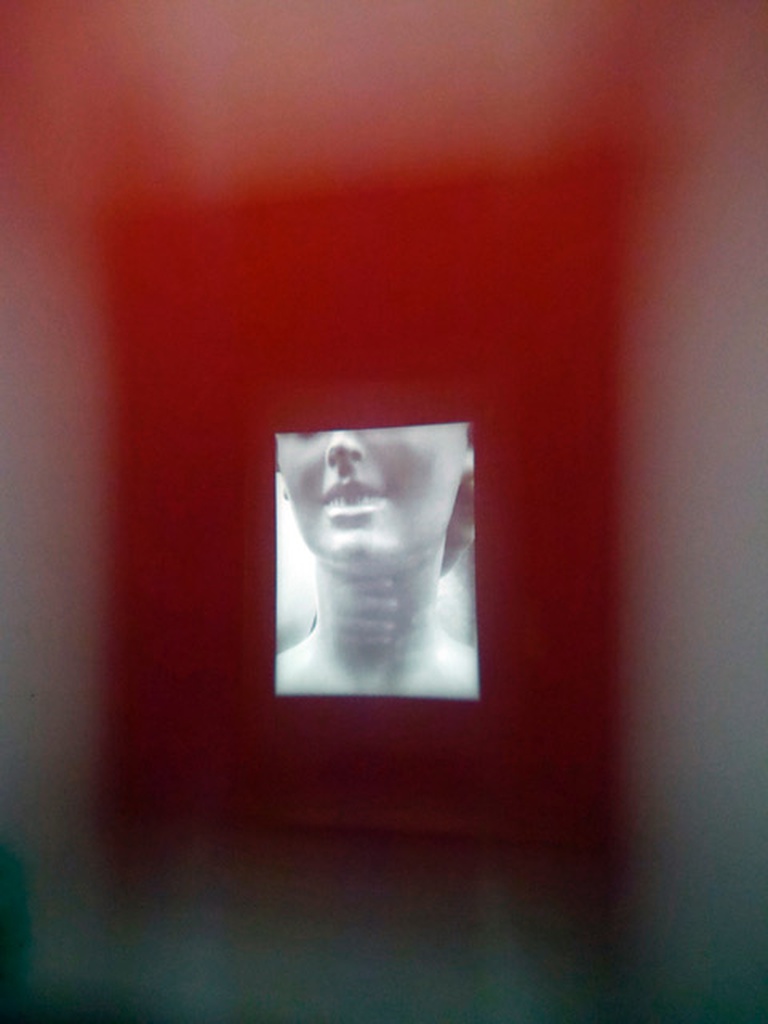
Renato Ferrão (V. N. Famalicão, Portugal, 1975) is a visual artist. He currently lives and works in Porto. He exhibits regularly since 2001 and on several occasions has made works in collaboration with Nuno Ramalho. Some of his exhibitions include: Senhor fantasma, vamos falar – Emissores reunidos, Fundação de Serralves; Peças de substituição, Espaço Chiado 8; Cascatas e desabamentos, Sismógrafo; Retrato em casa de espanto, Centro de Arte Contemporânea Graça Morais; Estudo das passagens, Ano 0 / Bienal de Arte Contemporânea de Coimbra. In 2003, he was a founding member of the space Salão Olímpico, and in 2011 he was awarded the União Latina fine arts prize. In his most recent work, he has been developing installations where light and movement play a major role.
Exhibition
23 Apr – 28 May 2022
Opening
Saturday, 23 April 17:00
Free admittance


